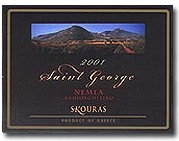| Duck Walk Blueberry Port |
How is it that our love of chocolate is, by all accounts private or personal, still as plainly misunderstood as the adoration for handcrafted cigars? Let’s get one thing straight, I’m not a smoker, but why is it that this dark, luscious, yet snappy confection, has so much influence on why we use it for innumerable purposes? Some talk shows and cooking docs will explain this by pinpointing some human chemical in the brain that allows us to enjoy it without the expectation of weight gain; or rather, without the guilt of realizing there’s enough hydrogenated fat and cocoa solids in most candybars to kill any species profiled in a NatGeo exposé. What I’m most afraid of, is the idea that you can amalgamate chocolate with just about anything these days, with some results that are far less inspiring than common science has allowed per se, for things like breakthroughs in chemistry, or even advanced podiatry. Boring right? Consequently, there’s every reason to be more interested in something carnal. Here’s a counterpoint though; why above all else, would the common bonbon, or nonpareil benefit from certain “fruit-forward” varietals? The answer is somewhat logical, with the inherit shock administered in small doses.
After touring a housewares dept. earlier this week, I came across a selection of chocolates, which to certain oenophiles, might be somewhat of a new curiosity. It’s no revelation to me, as to why critics might stampede all over the concept of creating chocolate morsels that, if anything, share a certain fidelity with good wine. Though I have to wonder about the “how” aspects in the formation of products like these. Are they hollow? Could it be they’re soaked in some solution that naturally decreases their metric weight? Do these companies utilize firming agents like “calcium-lactate,” or “agar-agar” in the melted counter-folds? Molecular or not, it would be simple-minded of us to think that truffles and bars made from cacao masses were not made to be pared with wines that could be considered “well-rounded, ripe, or something of a fruit-bomb. Call me cocoa-loco, but I think it’s ok some of the time, but not for the entire span of conscious nibbling, scarfing, or sipping.
 |
| Toro Albala PX |
Here’s the info: Try ruby ports, and if you can get it, a blueberry one. Duck Walk Vineyards will properly oblige you with such a thing. Aside from being pre-fortified in more ways than one, it’s surprisingly civil towards your more experimental “milk-or-nuts” chocolatiers. Some people think there is some benefit to white chocolate too, since it has found a lukewarm camaraderie with white zinfandel; but I remind those interested, that the white stuff is not exactly what you would call pure...and I stress that equally in the latter and the former. A good Pedro Ximenez, is endearing, but sometimes, it creates too much of a racy paring in itself; more so than some of the oozy, truffled cordials that need names like Grand Marnier, and Chambord to create those miniatures of confectionary liquor bottles you've handed-out on Valentine’s day. If you're treats lack potential, “Toro Albala” has a cream sherry that is better slated for caramel infused delicacies and those rich, amber toffees you always seem to forget about. Sure, I’ve heard there’s some chances to be taken with Rhone wines, light merlots and cabs; but as any opinion can be deferred, I state mine by saying that I would not want to experience the rot-gut aftermaths of mixing a potential dessert with 375ml or more, of something potentially viniferous.
I can sooner deflect the appeal of chocolate than to say that it pairs well with wine even in the most general sense. Even beyond measure, if you are in no ways interested in fully absorbing the intellectual side of known grapes, smile, and carry on. There’s certainly nothing wrong, or displeasing about the consistent use of confections to burnish the appeal of the world’s most sophisticated beverage. Notes, or nuance, you’re getting it all, so don’t think I’m trashing the idea that these two indulgences cannot exist in some form of harmony. I would just prefer to see where either of them are going and visit them separately depending on what days I have off from work.
Cacao is tough to contend with, it could benefit from an appellation...
Brian Maniotis
Westchester Wine Warehouse Team
Visit us online @: westchesterwine.com


